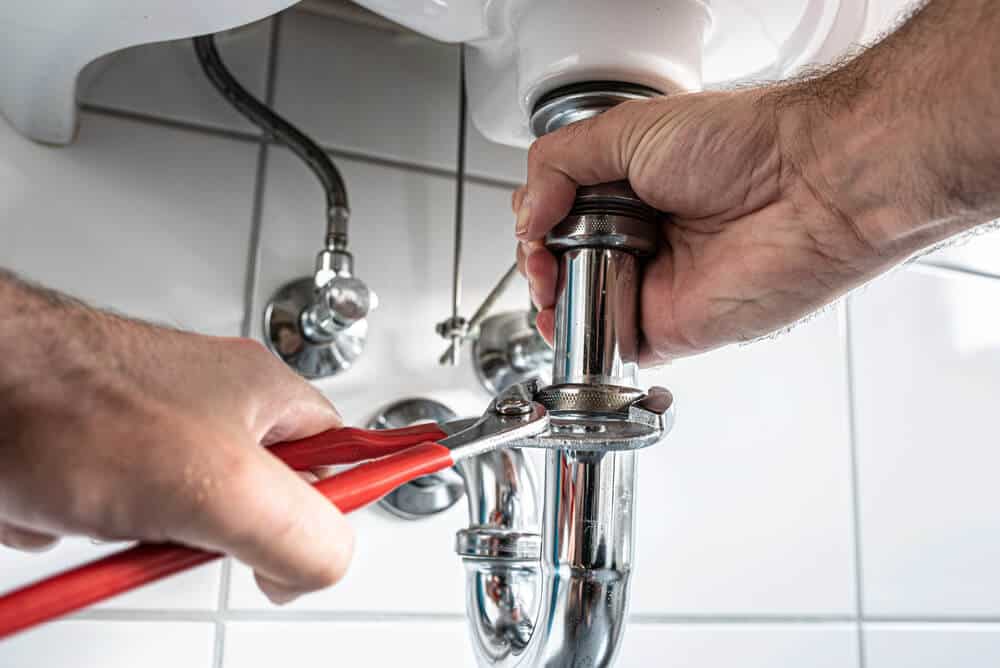Leaks in pipe joints can be a homeowner’s nightmare. A small leak can lead to major water damage, mold, and costly repairs if not addressed promptly.
The first step in preventing leaks and maintaining a functional plumbing system is understanding why they occur. Let’s explore the common reasons for pipe joint leaks and offer some effective prevention tips.
What are Pipe Joints?
Pipe joints are connections that allow different sections of piping to come together. These joints can be made from various materials, including PVC, copper, and galvanized steel.
The nature of the material used affects how durable the connection will be. Some materials expand and contract with temperature changes, while others might corrode or deteriorate over time.
Each joint type, whether threaded, welded, or glued, has its unique set of strengths and weaknesses. Understanding these nuances is vital for maintaining your plumbing.
Over time, factors like temperature fluctuations, water pressure changes, and the natural aging of materials can lead to leaks in these critical areas.
Common Causes of Pipe Joint Leaks
Temperature Fluctuations
Pipes are often subjected to varying temperatures. When temperatures rise, materials tend to expand; when they drop, they contract. This cycle can loosen pipe joints, leading to gaps where water can escape.
For instance, copper and PVC react to temperature changes differently, which can cause stress at joints made of different materials.
Poor Installation
A well-installed pipe joint should be tight and secure. If the installation was rushed or not carried out by a qualified professional, it could result in loose joints.
For example, improperly threaded pipes or misaligned joints are likely to develop leaks over time. If a joint is not adequately sealed, water will find its way through the cracks, leading to leaks.
Corrosion and Wear
Over time, pipes can corrode due to various factors, including the quality of the water, the materials used, and the environment. For metal pipes, rust can eat away at the material, weakening the joint and eventually causing leaks.
Regular maintenance checks can help identify early signs of corrosion before they lead to more significant problems.
Water Pressure Changes
Sudden spikes in water pressure can severely affect pipe joints. High pressure can place stress on joints, causing them to fracture or break apart.
Factors such as water hammering, which occurs when a tap is turned off suddenly, can create pressure surges that damage joints. A pressure regulator can help maintain a consistent and safe level, reducing the risk of leaks.
Improper Pipe Sizing
Using the wrong size of pipe for the specific application can lead to issues. If a pipe is too small for the volume of water it needs to handle, it can create excessive pressure on joints.
Conversely, if the pipe is too large, it may not fit snugly, leading to potential gaps and leaks. Always ensure that your plumbing is appropriately sized for its intended use.
Prevention Tips to Avoid Pipe Joint Leaks

Regular Inspections
Conduct routine inspections of your plumbing system. Look for signs of corrosion, rust, or any water stains around joints. Identifying issues early can save you from costly repairs later.
If you’re not comfortable doing it yourself, hiring a professional plumber can provide peace of mind.
Use Quality Materials
Invest in high-quality plumbing materials that are resistant to corrosion and wear. For example, stainless steel and certain plastics offer enhanced durability compared to standard metals.
Choosing reputable brands can often lead to longer-lasting joints that withstand the test of time.
Proper Installation Techniques
If you’re installing pipes or joints yourself, make sure to follow best practices. Use the appropriate tools and take your time to ensure everything fits well.
If you’re unsure, seeking help from a professional can make a world of difference in the longevity of your plumbing. Affordable solutions for pipe repairs are available from experienced plumbers who can help prevent costly mistakes.
Maintain Consistent Water Pressure
To prevent leaks due to pressure issues, consider installing a pressure regulator. This device helps maintain consistent pressure throughout your plumbing system, reducing the risk of pressure-related leaks.
Keep an eye on your water pressure and adjust as necessary.
Insulate Pipes
In climates where temperatures can fluctuate dramatically, insulating your pipes can help prevent expansion and contraction. This is particularly important for unheated spaces like basements or attics where pipes might freeze in winter.
Insulation sleeves can provide critical protection against temperature-induced brittleness.
Use Sealants Wisely
When assembling pipe joints, use appropriate sealants such as PTFE tape or pipe joint compound to help create a watertight seal. However, be cautious not to over-apply, as excess sealant can lead to leaks instead of preventing them.
A thin, even layer is usually sufficient to create an effective barrier.
Monitor for Water Hammer
If you notice banging noises when turning off faucets, you may have a water hammer issue. Installing air chambers or water hammer arrestors can help absorb the shock created by rapidly flowing water, reducing pressure spikes that can lead to leaks.
Replace Old Pipes
If your pipes are nearing the end of their lifespan, it might be time for a full replacement. Old, corroded pipes are more susceptible to leaks.
Upgrading to modern materials can save you from frequent repairs and contribute to a more efficient plumbing system.
Understanding the Impact of Environment
The environment plays a significant role in the longevity of pipe joints. Factors like humidity, soil conditions, and exposure to chemicals can accelerate wear and tear.
In areas with high humidity, for instance, condensation can lead to corrosion in metal pipes. Keeping this in mind can inform your decisions and maintenance practices.
Pipe joint leaks can stem from a variety of factors, each requiring a different approach for prevention. By understanding the fundamental causes and implementing effective maintenance strategies, homeowners can significantly reduce the likelihood of leaks.
With a little effort and foresight, you can keep your plumbing running smoothly for years to come.




